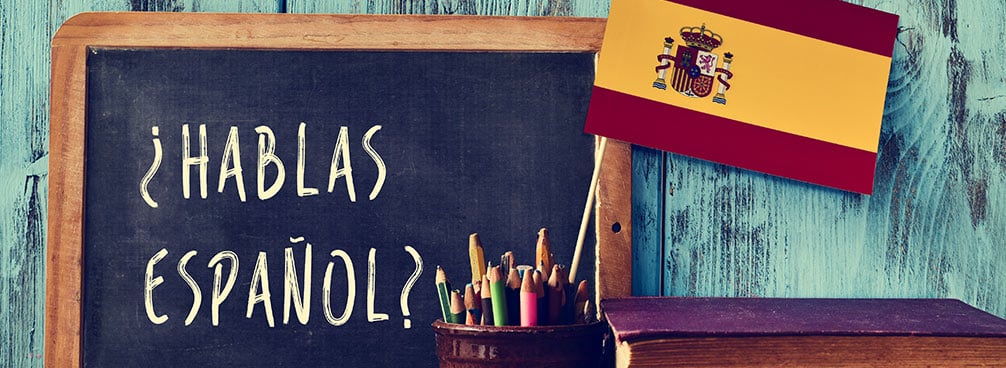Grammar refers to the set of rules used to form sentences in any given language. Without grammar, it would be very difficult to learn a language. Grammar is one of the building blocks of language and is necessary for for us to convey what we want to say properly.
Lengalia covers all the fundamental and essential points of a language's grammar in a clear and user-friendly way. Every grammatical point is fully explained and reinforced with examples in English.
Our courses on Spanish grammar are offered at 7 levels: A0 (Beginners) – C2 (Advanced). If you follow all levels, from beginners to advanced, you will encounter all aspects of the language.

This is the ideal course for absolute beginners. It provides you with a clear, simple and successful way to learn and gives you the best grounding in the basics.
This online course is designed for beginners who are just starting to learn Spanish. It offers a clear and comprehensive grammatical foundation for acquiring a basic knowledge of the language.


This online course is designed for beginners who already have a basic knowledge of Spanish and want to continue their learning. It provides a clear and comprehensive grammatical base.
This online course is designed for students who want to achieve an intermediate level of Spanish and want to continue their learning. It deepens and extends their existing knowledge.


This online course is designed for students who already have an intermediate level of Spanish and want to continue their learning. It deepens and extends their existing knowledge.
This online course is designed for students who already have an advanced level of Spanish and who want to continue their learning. It deepens and extends their existing knowledge.


This online course is designed for students who already have a very advanced level of Spanish and want to continue their learning. It serves to deepen and perfect an existing knowledge of the language.
This course is designed to help you to recognise, produce and transcribe all of the sounds in Spanish.


Lengalia offers Spanish courses at 6 different levels based on the recommendations of the Common European Framework of Reference for Languages (CEFR). Students who pass the final test in a course will receive a certificate of proficiency detailing their level of attainment. These certificates are widely accepted throughout the world.
For many students, Spanish grammar is the most complex and challenging part of their learning experience. Mastering the syntactic aspects, the multiple verb tenses, the sets of rules and grammatical nuances will require a considerable amount of effort when learning the language. However, the truth is that not all areas of the language are as difficult as they seem. With a well-designed method, the right resources and your discipline as a student, you will be able to master an essential part of the Spanish language.
Table of contents
1. Spanish grammar
2. Why is it easy to learn Spanish grammar?
3. Why is it difficult to learn Spanish grammar?
4. What Spanish grammar courses does Lengalia offer?
5. What advice does Lengalia give to improve your Spanish grammar?

Learning Spanish grammar is to be able to lay the true foundations of this language. As it is often said, practice makes perfect and, in this case, the mastery of a language is always based on continuous work to consolidate aspects related to the phonetic and phonological characteristics of words, their morphology, their syntactic rules or their lexical and semantic details. Integrating, developing and acquiring a solid foundation in Spanish grammar will allow you to achieve both oral and written proficiency in this language:
- You will be able to better understand the structure of words in order to express yourself with greater fluency and agility.
- You will make fewer mistakes in expression and spelling.
- You will learn to construct sentences in a correct and efficient way, achieving communicative and written fluency.
At Lengalia we provide you with a wide range of exercises so that you can work at your own pace, in a simple and enjoyable way, in order to consolidate the following topics:
1. Nouns
- They name objects, people, countries...
Ventana, gato, teléfono, Australia, Ernesto. window, cat, telephone, Australia, Ernesto.
- They have a gender (masculine-feminine) and number (singular-plural).
- They are the nucleus of nominal syntagms (subjects of sentences).
Different types of nouns
- Common nouns: they designate things in a generic way. Casa, silla, gato. house, chair, or cat.
- Proper nouns: they designate things in a particular and unique way, for example, proper names and countries.
- Concrete nouns: they refer to things that can be seen and touched. Libro book.
- Abstract nouns: they define things that are perceived by the senses or emotions. Felicidad happiness.
- Countable nouns: they are entities that can be numbered and counted.
- Uncountable nouns: they only have a singular form. Aire, amabilidad, bondad, frío. air, kindness, goodness, cold.
- Individual nouns: they designate units.
- Collective nouns: they define groups of beings. Equipo, público. team, public.
2. Adjectives
- Words that accompany nouns and express qualities. Casa grande, día lluvioso, niño valiente. big house, rainy day, brave child.
Different types of adjectives
- Qualifying adjectives: they designate qualities. Hombre elegante, mujer inteligente, café frío. elegant man, intelligent woman, cold coffee.
- Possessive pronouns denote the possession of the noun. Mi teléfono. My phone.
- Demostratives pronouns: they designate people or other entities by defining their distance from the speaker. Ese niño, este coche, esa estrella. that child, this car, that star
- Relational adjectives: they express the characteristics of nouns which allow them to be included in groups. Personal docente, música clásica. teaching staff, classical music.
- Adverbial adjectives: they are used to modify the noun by expressing something temporary. La futura esposa, el posible ganador. future wife, possible winner.
- Indefinite pronouns: they indicate undetermined quantities. No he leído ninguna indicación. I haven't read any indication.
3. Articles
- They accompany the noun.
- They agree in gender and number.
El ordenador, los trenes. the computer, the trains.
Different types of articles
- The definite articles in Spanish grammar are el / los / los / la / las. They define people, things, days of the week, fruits, times, instruments, and sports, among other things. El voleibol, la guitarra, el sol, el domingo. Volleyball, the guitar, the sun, Sunday.
- The indefinite articles are un / unos / unas / una / unas. They are used to accompany the noun when the noun is indefinite or undefined. Hoy hay una fiesta; Me acompañó un amigo. Today there is a party; I was accompanied by a friend.
- The neuter article – lo. It’s invariable and can be used in front of just about any adjective in order to express something abstract or a quality. Lo bueno. the good thing
4. Pronouns
These are words that replace the noun and agree with it in gender and number.
Different types or pronouns
- Personal pronouns: they name the person we are talking about or the person we are talking to. Tú, yo, él you, I, he
- Possessive pronouns: they designate possession. Es mío. It is mine.
- Reflexives pronouns: they indicate that the action is performed by the subject. Yo me peino. I comb my hair.
- Interrogative pronouns: they are used to ask questions. ¿Quién ha venido? Who has come?
- Demostratives pronouns: they designate people or other entities by defining their distance from the speaker. Quiero ese, el rojo. I want that one, the red one.
- Indefinite pronouns: they indicate undetermined quantities. ¿Hay algo en el bolso? No, no hay nada. Is there something in the bag? No, there isn't anything.
5. Adverbs
These words the are parts of a sentence which complement verbs or adjectives. They are invariable and give information about the action. El padre llegó rápido. The father arrived quickly.
Different types of adverbs
- Adverbs of place: allí, aquí... there, here.
- Adverbs of quantity: mucho, poco... a lot, a little.
- Time: hoy, mañana... today, tomorrow.
- Mood/manner: bien, mal… well, badly.
- Affirmation: exacto, sí, efectivamente… exactly, yes, indeed.
- Negation: no, nunca... no, never.
- Exclamatives and interrogatives: cómo, cuándo, por qué... how, when, why.
6. Prepositions
Invariable words that act as a link between the parts of a sentence.
A, ante, bajo, cabe, con, contra, de, desde, durante, en, entre, hacia, hasta, mediante, para, por, según, sin, so, sobre, tras...
To, before, under, under, fits, with, against, from, since, during, in, between, towards, to, until, by means of, for, by, according to, without, so, on, after...
7. Verbs
These are lexical categories that express the action, condition, movement or existence performed by the subject of the sentence. They must always agree with the subject in person and number.
Different types of verbs:
7.1 Non-personal forms of the verb.
- Infinitive: cantar, escribir, pensar sing, write, think
- Participle: cantado, escrito, pensado sung, written, though
- Gerund: cantando, escribiendo, pensando singing, writing, thinking
7.2 Verb Modes
7.2.1 Indicative: expressing real and perceptible information.
Pablo lee. Paul reads.
The different tenses in the Indicative:
Present, the present perfect tense, the imperfect past, the past indefinite (simple past tense), the past perfect tense (pluperfect), the simple future, the future perfect, the simple conditional, the conditional perfect
7.2.2 Subjunctive: this is used to express hypothetical, uncertain information or mere wishes.
Posiblemente ya haya venido. He may have already come.
Me gustaría que lloviera. I would like it to rain.
The different tense in the Subjunctive:
Present, the present perfect, the imperfect subjunctive, the past perfect (pluperfect)
7.2.3 Imperatives: this is used to indicate orders or requests.
Elena, por favor, ven aquí. Elena, please come here.
7.3 Verb tenses:
- Simple: a single verb: Yo leo. I read.
- Compounds: auxiliary verb (haber) + participle: Yo he visto esa película. I have seen that film.
7.4 Active and passive verb forms
- Active: the subject performs an action: Estoy estudiando. I am studying.
- Passive: the subject receives the action of the verb: El alumno fue felicitado por el profesor. The student was congratulated by the teacher.
7.5 Reflexive verbs
- They are accompanied by reflexive pronouns and designate an action performed by the subject on themselves: Yo me lavo las manos. I wash my hands.
7.6 Transitive and intransitive verbs
- Transitive: they need a direct object: María reparte los libros y los cuadernos. María distributes the books and notebooks.
- Intransitive: they lack a direct object: El ladrón huyó por la ventana. The thief escaped through the window.
Spanish grammar is not one of the most complex grammar systems in existence, despite what many English speakers, as well as native speakers of Romance languages such as French, Italian or Portuguese, say. A similar alphabet, an absence of declensions such as in Polish, and very simple rules when it comes to forming the gender and number of nouns and articles mean it may be simpler than it sounds. Believe it or not, learning Spanish can be easier than it looks.
Contrary to the popular belief that Spanish grammar is one of the most difficult to master, some people do not agree. There is a large number of people who have already mastered the language effectively, and they have a very different perspective. Spanish is, in reality, an easy language to learn. If you don't want to just take our word for it, check out what the the U.S. Department of State says.
According to a German ranking that analyzes which languages are the easiest for English speakers to learn, Spanish is in "category 1". In other words, it is among the easiest. This is the result of more than 70 years of providing language training to diplomats.
2.1 Learning Spanish for English speakers
English speakers point out that they are grateful to have, among other things, a similar alphabet and vocabulary, as well as the plural construction similar to that of English. They also highlight a well-known fact:
● Spanish is one of the most widely spoken languages: it is spoken practically all over the world and this helps in its consolidation.
● Spanish grammar is easy once the patterns of verb conjugation are understood.
● Once the order of words in sentences is understood and dominated, everything becomes easier.
● Also, there is another fact. When a person is fluent in a language other than their own, settling the different semantic, syntactic or morphological aspects of Spanish is not so complicated. No more than German, Italian, or French. And much less than Chinese.
2.2 Romance languages and Spanish grammar
Romance or Romance languages are a group of interrelated languages that are linked to each other thanks to their Latin roots. Therefore, this family of languages such as Portuguese, French, Italian or Romanian share similar elements. So, if you are a native speaker or have already mastered any of them, Spanish grammar will not be particularly complicated for you. The contrast in their rules, syntax, conjugations or lexicon is not so great. There are common points that can facilitate your learning.
Spanish grammar is easy: the most repeated opinions on the subject.
When it comes to understanding a language, each student has their own experience, their own way of approaching learning. As far as Spanish grammar is concerned, there is a tendency to consider it more accessible than most people think. The reasoning behind this opinion is as follows:
● There are no declensions in Spanish, as there are in Russian, Czech, Polish or German.
● There is also no excess of vowels and, in addition, Spanish - as well as its grammar - has an advantage: it is pronounced as it is written in practically all cases.
Considering these aspects, you can see that, although it is true that all language learning is challenging and requires as much motivation as discipline, Spanish is not one of the most complicated languages in existence. With the right method and the necessary commitment, the results can really pay off.
Spanish grammar presents certain peculiarities in some of its various forms that can make it more complex to learn. The distinction between the verbs "ser" and "estar" or the use of the prepositions "por" and "para" tend to be those bumps in the road of learning Spanish grammar that you may have to face along the way.

There are concepts of Spanish grammar that may present some degree of complexity. These are specific aspects, to which every student should perhaps pay more attention and work on on a daily basis. These are those grammatical nuances that even linguists consider to be a challenge for anyone who is starting out for the first time in learning this language.
● First of all, one of the most problematic issues concerns the verbs "ser" and "estar". While many languages solve it by using a single verb, as is the case with "to be" in English, in Spanish they have very different meanings for native speakers. While "ser" defines permanent states such as names, nationalities or professions (soy escritor, Carlos es italiano I am a writer, Carlos is Italian), "estar" describes temporary states such as emotions or physical conditions (estoy cansado, Andrea es muy feliz I am tired, Andrea is very happy).
● Likewise, another challenge you will encounter in learning Spanish grammar relates to the use of the prepositions "por" and "para". It is common to trip up with small errors due to their very subtle differences. However, in this case you may find the following strategy useful: we do things FOR a cause TO achieve a purpose.
● Mastering and understanding the subjunctive mood is certainly another hurdle that every learner must overcome. Once you have mastered the present/past/future tenses, Spanish grammar goes a step further to delve into the realm of uncertainty and subjectivity. Mastering the subjunctive may feel like an uphill struggle at first, but with practice and methodology you will become fluent in using those statements in which uncertainty (tal vez llueva, puede que lo sabe...) are a constant in the Spanish language.
● Verb tenses, a matter of practice. Indeed, another cornerstone of Spanish grammar is being able to recognize and effectively use the verb tenses (preterite perfect, preterite imperfect, etc.). Getting to grips with this subject is no easy task: there are many conjugations and moreover, there are different tenses and not all of them fit or have to do with your mother tongue. However, to speak and write this language fluently, tables, exercises and memorization techniques will be very useful. A solid methodology and your daily commitment are all you need.
At Lengalia we offer several courses organized in 6 levels. You can start learning Spanish grammar without any previous knowledge (A0). On the other hand, if you already have a certain base, you can adjust to that stage according to your knowledge and needs. Also, you have at your fingertips comprehensive practical and theoretical resources to build your understanding of nouns, articles, syntactic constructions and verbs in a simple, dynamic and accessible way. You set the pace and we offer you the best materials.

Simplicity, accessibility, professionalism, contents adjusted to your needs, and a wide range of practical exercises that are always entertaining and always ready for you to delve into them whenever you want. Regardless of whether you only have half an hour, or if you can dedicate more time, at Lengalia you can acquire a highly proficient command of Spanish grammar whenever and wherever you want, thanks to our resources. In each lesson you will find both theory and practice to deepen your understanding and control of nouns, adjectives, articles, sentence construction and, of course, verbs.
You can start learning Spanish grammar without any previous knowledge or you can start from that level where you already have a good command of the language. Lengalia offers Spanish courses in 6 levels based on the recommendations of the Common European Framework of Reference for Languages (CEFR). These levels range from A1 (beginner) to C2 (advanced).
We adapt to you with one purpose in mind: that you acquire the maximum proficiency in Spanish both in oral and written Spanish and that you are able to function in any situation. To achieve this, we have designed our own methodology that has been delivering excellent results to our students since 1990.
Also, once you have completed the Spanish course, you will receive a certificate that will accredit your proficiency in the language. and that is accepted and recognized by many institutions worldwide.
Is there a foolproof and effective method to learn Spanish grammar more easily? Actually, there is no exclusive method: there are multiple approaches and strategies. However, what is most crucial is that you take your Spanish learning beyond your specific study hours. Start thinking in Spanish, look for books and audio-visual materials in this language, integrate it into your daily life whenever you can. And don't forget one essential factor: your discipline and commitment as well as the method we offer you at Lengalia will allow you to advance successfully day by day.

It is advisable to follow a specific methodology to consolidate and control Spanish grammar effectively. Having clear and versatile guidelines and strategies will help you not only to understand and master the language, but also to see progress and become more motivated day by day.
Therefore, at Lengalia we recommend you bear in mind the following key points:
- Understand how the brain learns. The neuroscience of language learning tells us that there are certain strategies that facilitate this skill. The key is to create habits, personalize the information to make it meaningful, use all possible perceptual channels (listening, communication, writing) and keep in mind something very important: the brain is governed by patterns, just like languages. The rules of Spanish grammar will be integrated as we practice and memorize them over and over again. Learning from mistakes and continuously doing the exercises makes it easier to integrate each rule, each norm, each verb tense.
- Yes to children's and young people's materials. New technologies are your best allies when it comes to learning Spanish grammar. So an ideal strategy is to use movies, books, and children's programs. Thanks to these tools, you will master basic aspects related to adjectives, nouns, sentence structures, simple verb tenses, etc.
- Thinking in Spanish. It is true, you have not yet become proficient in Spanish grammar, however, to learn a language you need to start thinking in it. Integrate it into your life and relate it to your tasks. Find out what those objects you use every day are called and investigate how you would say the phrases you use the most at work in Spanish. In essence, make time for this language beyond your study hours with Lengalia.
- Books tailored to your personal interests. Film, horror literature, art, or astronomy, to name just a few topics. Look for literary material in Spanish and don't hesitate to use a dictionary such as Linguee. The more meaningful the material is to you, the faster you will learn the language and the Spanish grammar.
- Listen, repeat, write down mistakes. When it comes to learning a language, it's time to do away with shame and being self-conscious. Decisiveness is key, as is the willingness to listen, repeat what you hear, and monitor your mistakes. Practice, as well as immersion, whenever possible, is key.
- Your best allies: native speakers and style and grammar manuals. Do not miss opportunities to communicate with Spanish speakers. Also, always have appropriate style and grammar manuals at your fingertips, with which you can review aspects of style, lexicon, syntax, and verb tenses.
To conclude, at Lengalia you will always have the best resources and methodology at your disposal to advance in your learning process. However, keep in mind that success comes when you commit yourself to the language and go beyond the hours of study.
